Table of Contents
How to Make Chinese Cauliflower Stir-Fry at Home (Delicious & Easy Recipe)
If you’ve ever found yourself craving the deep, savory flavor of your favorite Chinese takeout, you’re not alone. The smoky scent, tender-crisp texture, and deep flavor of a good stir-fry hit all the right notes.
Now imagine creating that same unforgettable experience right in your own kitchen—minus the delivery wait time. That’s exactly what you’ll get when you master this homemade Chinese cauliflower stir-fry recipe.
Whether you’re a beginner home cook or a seasoned kitchen pro, this guide is your step-by-step walkthrough to making Chinese-style cauliflower that’s quick, healthy, and absolutely bursting with flavor.
Why This Chinese Cauliflower Recipe Will Be Your New Favorite
When you’re pressed for time but still want to cook something nourishing and tasty, stir-fry should be your go-to. Here’s why this specific Chinese cauliflower version deserves a spot in your weekly rotation:
- Fast & simple: Done in under 30 minutes
- Healthy choice: Packed with fiber and antioxidants
- Plant-based: Naturally vegetarian, and easily vegan
- Bold flavors: Garlic, ginger, soy, and sesame elevate the humble cauliflower
- Totally flexible: Add your favorite veggies or proteins
This dish is more than just a meal—it’s a flavor-packed experience that brings the essence of Chinese cooking right to your stove.
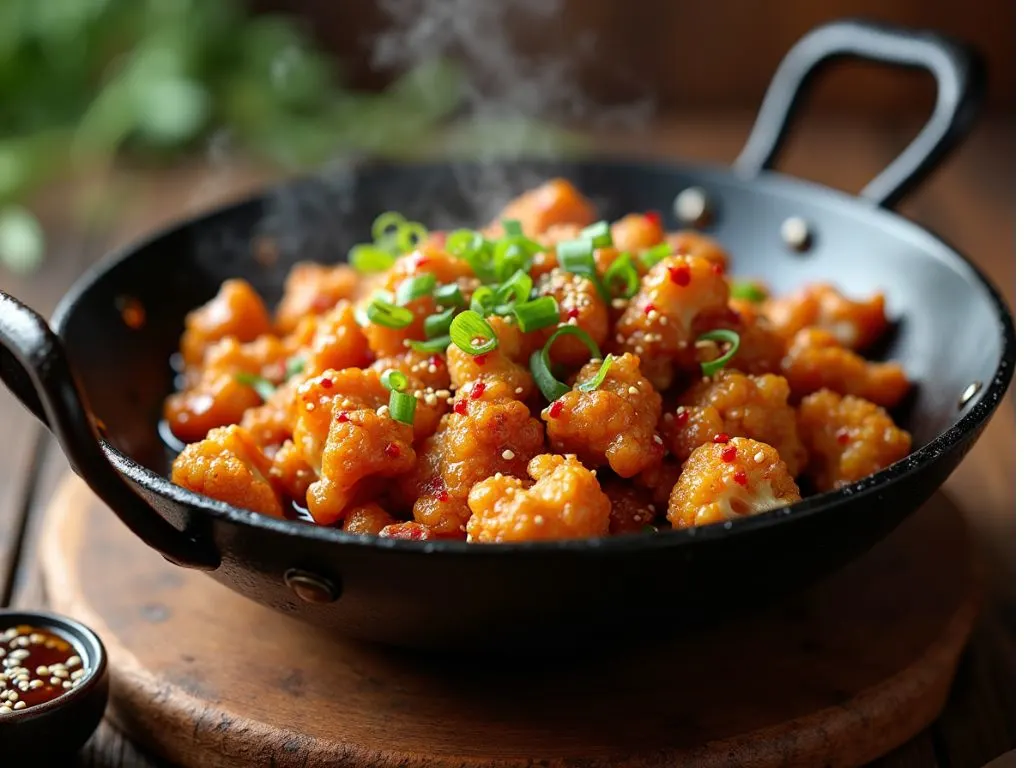
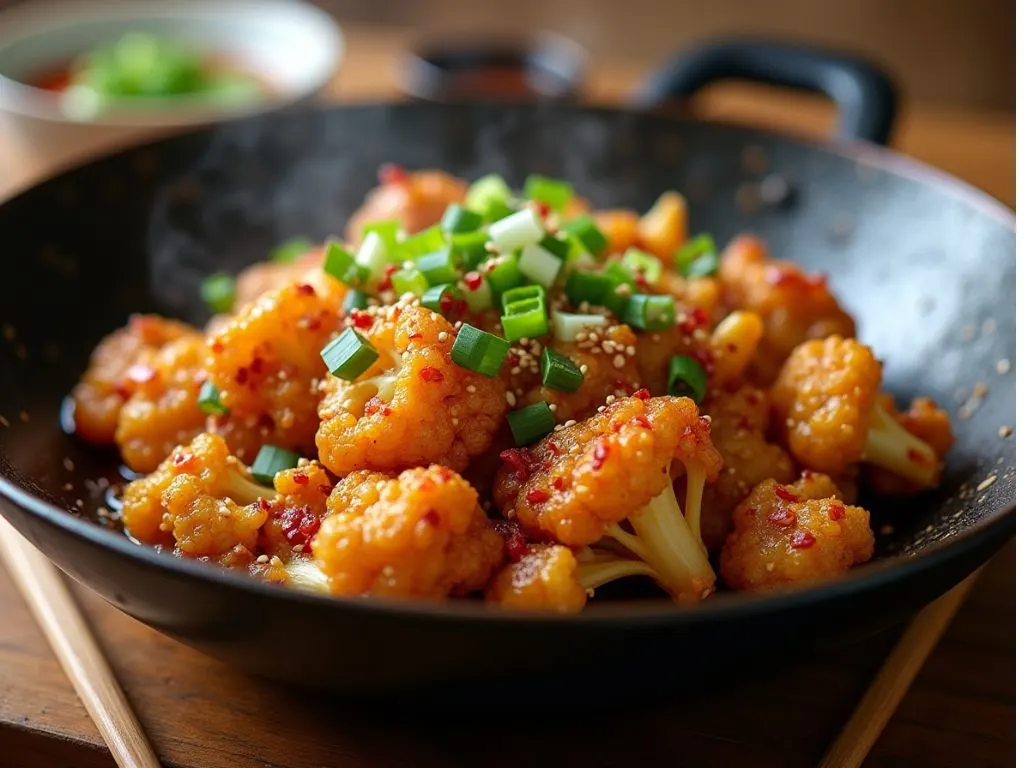
Ingredients for the Best Chinese Cauliflower Stir-Fry
Before you begin, gather your ingredients. Here’s everything you’ll need:
Ingredient Table
| Ingredient | Quantity | Notes |
|---|---|---|
| Cauliflower florets | 1 medium head | Cut into bite-sized pieces |
| Garlic | 3–4 cloves | Finely minced |
| Fresh ginger | 1 tablespoon | Grated or minced |
| Soy sauce | 2 tablespoons | Low-sodium preferred for flavor balance |
| Oyster sauce (optional) | 1 tablespoon | Adds rich umami depth if desired |
| Sesame oil | 1 tablespoon | For final drizzle |
| Chili flakes or sauce | To taste | Optional, for heat |
| Cooking oil | 2 tablespoons | Peanut or vegetable oil works best |
| Green onions | 2 stalks | For garnish |
Optional add-ins:
- Sliced bell peppers
- Mushrooms
- Broccoli or snap peas
- Crushed peanuts or sesame seeds
How to Prep Cauliflower for Stir-Frying Like a Pro
You might be tempted to toss raw florets straight into the pan, but you’ll get better results if you prep them right.
Here’s how to do it:
- Wash and dry your cauliflower thoroughly.
- Slice the cauliflower into similar-sized pieces so everything cooks at the same pace.
- (Optional) Drop the florets into boiling water for a quick 2–3 minute softening before stir-frying. This softens them just enough to stir-fry evenly.
- Pat them dry completely. Excess moisture will steam the cauliflower instead of searing it, and you’ll miss out on those golden crispy bits.
Prepping well is the key to that perfect texture—crispy edges with a tender bite inside.
Simple Guide: Making Stir-Fried Chinese Cauliflower in Your Kitchen
You’ve got your ingredients and your cauliflower prepped—now it’s time to fire up the wok (or pan) and bring this dish to life.
1. Heat your wok or skillet
Use medium-high to high heat. You want your oil to shimmer slightly before you add anything to the pan.
2. Sauté the aromatics
Add your minced garlic and ginger. Stir constantly for 30 seconds until the fragrance hits—this is where the flavor base begins.
3. Add cauliflower
Toss in the florets and stir-fry them for about 5–7 minutes. Let them develop a golden-brown color. You want charred spots and slightly crisp edges.
4. Sauce it up
Add the soy sauce, oyster sauce, and chili flakes. Stir well to coat everything evenly. Let the liquid cook down a bit so it wraps around each floret, giving them a glossy coating.
5. Finish with sesame oil & garnish
Once it’s done, remove from heat and finish with a splash of sesame oil for added aroma. Add chopped green onions and serve immediately.
This simple sequence gives you a stir-fry that tastes like it came from a Chinese restaurant but was crafted with your hands in your own home.
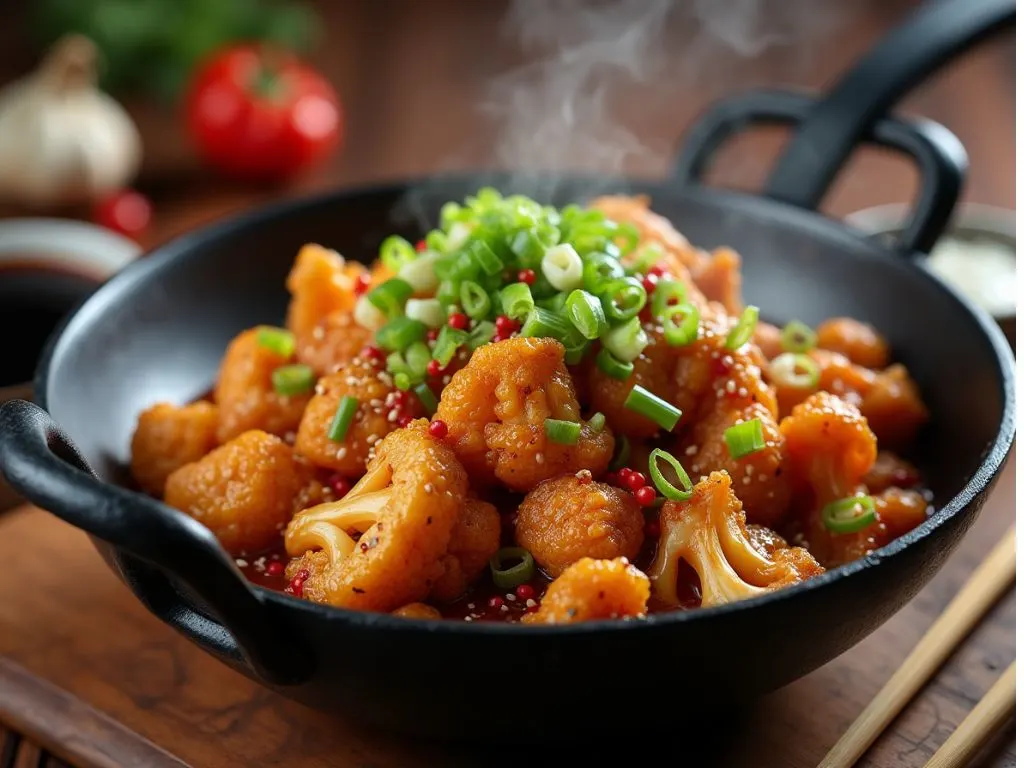
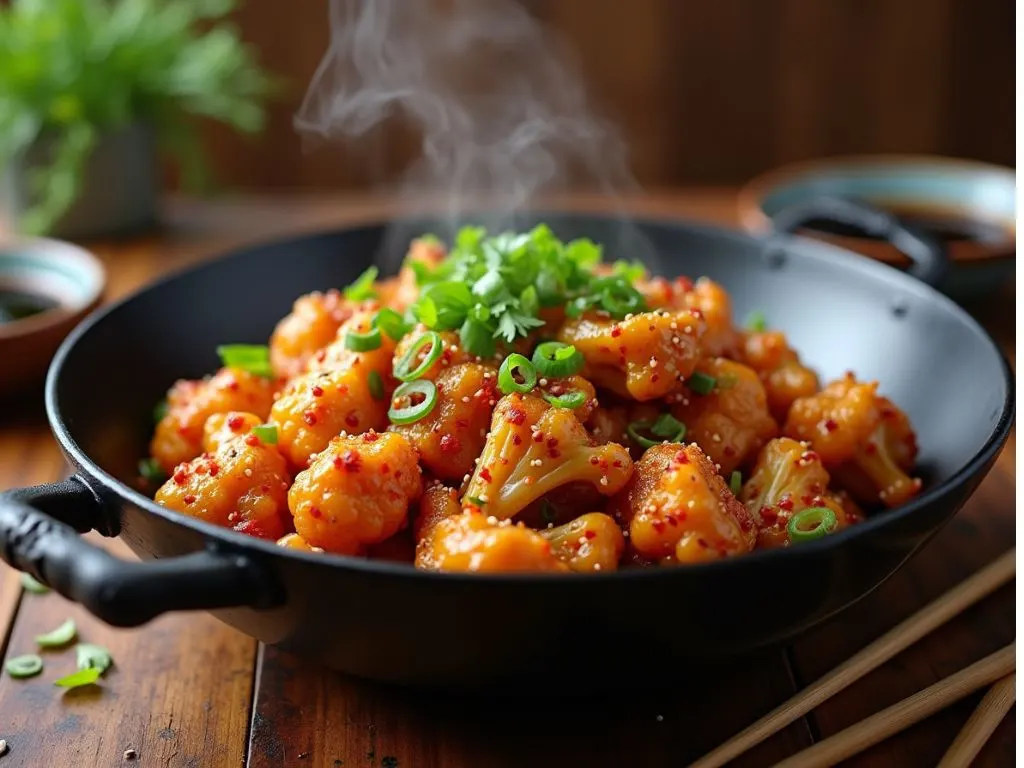
Wok or Skillet? What You Should Use
A traditional wok works well because it reaches high temperatures fast and cooks food evenly. It also allows you to toss ingredients efficiently, helping achieve that authentic “wok hei” flavor—slightly smoky and charred.
No wok? No problem. If you don’t have a wok, a roomy cast iron or quality non-stick pan will get the job done. Just make sure it’s hot enough and wide enough so your cauliflower isn’t overcrowded.
Expert Tips for Getting It Just Right
You’ve followed the steps—but how do you take it from good to great? These tried-and-true tips will elevate your Chinese cauliflower game:
- High heat is non-negotiable: That’s what gives your cauliflower that perfect wok-seared edge.
- Avoid overcrowding: Stir-fry in batches if needed so everything sears properly.
- Balance your sauce: If it’s too salty, add a pinch of sugar or a splash of rice vinegar.
- Dry your veggies well: Moisture is your enemy—it leads to steaming, not stir-frying.
- Make it spicy: Add chili paste, fresh Thai chilies, or even Szechuan peppercorns if you like heat.
Tasty Variations to Try
Once you’ve mastered the classic version, you can switch things up and try new combinations. Stir-fry is incredibly forgiving and versatile.
Popular Additions:
- Szechuan-style cauliflower: Add Szechuan peppercorns, dried red chilies, and black vinegar for a tongue-tingling twist.
- Sweet and sour cauliflower: Mix in pineapple chunks and use a blend of vinegar, sugar, and ketchup for a tangy profile.
- Cauliflower Manchurian: Coat florets in cornstarch, fry until crispy, and toss in a thick, spicy Indo-Chinese sauce.
Let your taste buds be your guide. The beauty of this dish lies in how easily it adapts to your preferences.
Serving Suggestions: What to Eat It With
Your cauliflower stir-fry is the star—but it plays well with others.
Best Pairings:
- Steamed jasmine or brown rice
- Fried rice or vegetable lo mein
- Egg rolls or spring rolls
- Chilled cucumber salad for contrast
- Miso or hot & sour soup on the side
A generous sprinkle of sesame seeds or crushed peanuts just before serving adds crunch and flair.
How to Store and Reheat Chinese Cauliflower
Got leftovers? Great news—this dish keeps well and reheats beautifully if you do it right.
Storage Tips:
- Use an airtight container
- Refrigerate for up to 3 days
- Avoid freezing if your sauce includes starch (it can separate when thawed)
Reheating Tips:
- To reheat, your best option is using a hot pan or baking it in the oven at 375°F for a few minutes.
- Avoid microwave: It softens the texture and can make your cauliflower soggy.
FAQs About Chinese Cauliflower Stir-Fry
Can I use frozen cauliflower?
Yes, but be sure to thaw it fully and pat it dry. Frozen cauliflower tends to release a lot of moisture, which can make your stir-fry soggy.
Is Chinese cauliflower stir-fry gluten-free?
Chinese cauliflower stir-fry can be! Swap in tamari or a gluten-free alternative if you need to avoid traditional soy sauce.
What proteins can I add?
Tofu, tempeh, shrimp, or chicken all pair perfectly. Prepare your choice of protein separately, then fold it back into the dish after the sauce goes in.
Can I make this dish ahead of time?
You can chop everything and even lightly cook the Chinese cauliflower ahead to save time later. Stir-fry just before serving for best results.
What oil is best for stir-frying?
Pick a cooking oil that holds up under high heat, such as peanut, grapeseed, or avocado.
Final Thoughts: Bring Chinese Flavors to Your Home with This Cauliflower Stir-Fry
You don’t need a passport or a takeout menu to experience the bold, delicious flavors of Chinese cauliflower stir-fry. With just a few pantry staples and a hot skillet, you can create a meal that’s satisfying, nutritious, and entirely yours.
Making meals at home doesn’t mean you have to stick with dull flavors or boring textures. This dish is proof that a handful of fresh ingredients, stirred with care and seasoned with intention, can produce something extraordinary.
Ready to Try It Out?
Take 30 minutes this week and give this Chinese cauliflower stir-fry a shot. Post your results, tag your creations, or share it with a friend who needs some kitchen inspiration. Your wok (or pan) is waiting—let’s get sizzling!
Have You Given This Recipe A Try?
There are no reviews yet. Be the first one to write one.

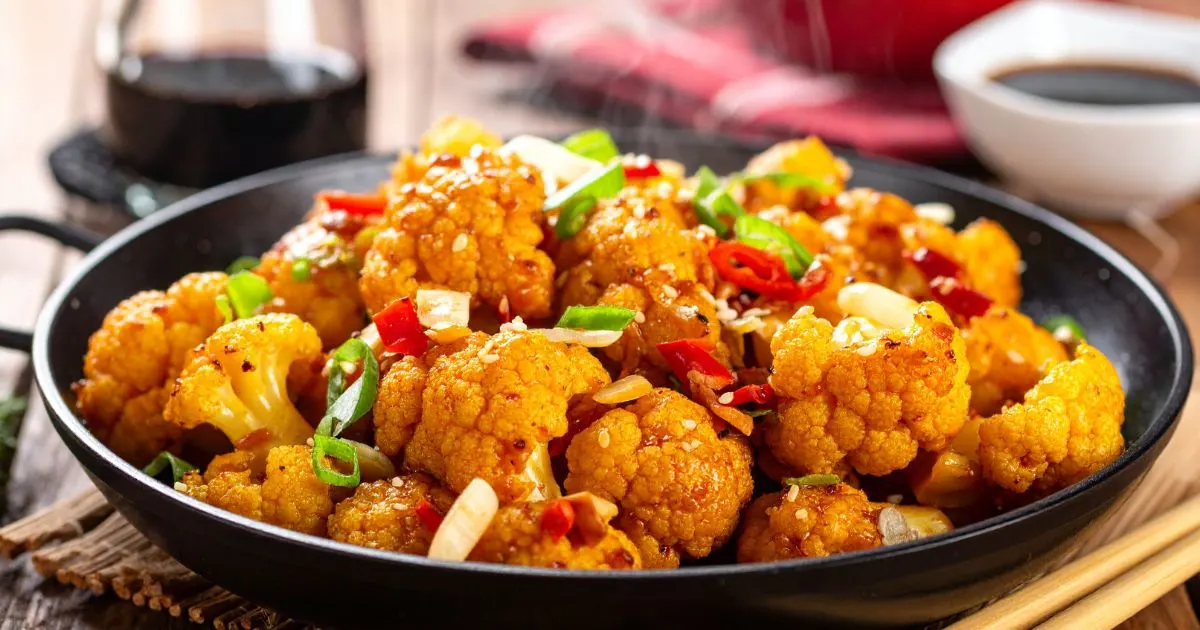
1 thought on “Easy Chinese Cauliflower Stir-Fry Recipe | Healthy & Flavorful”